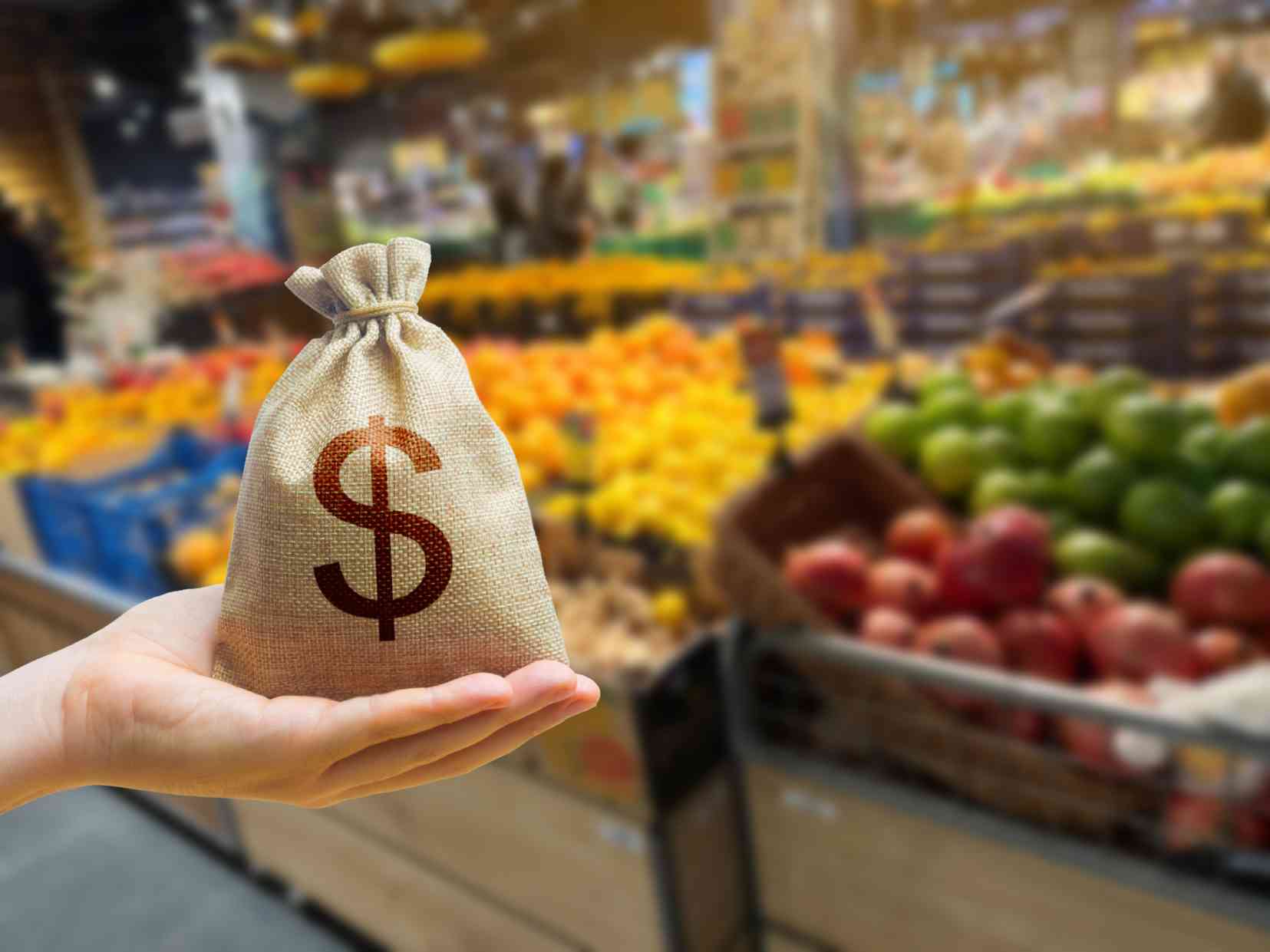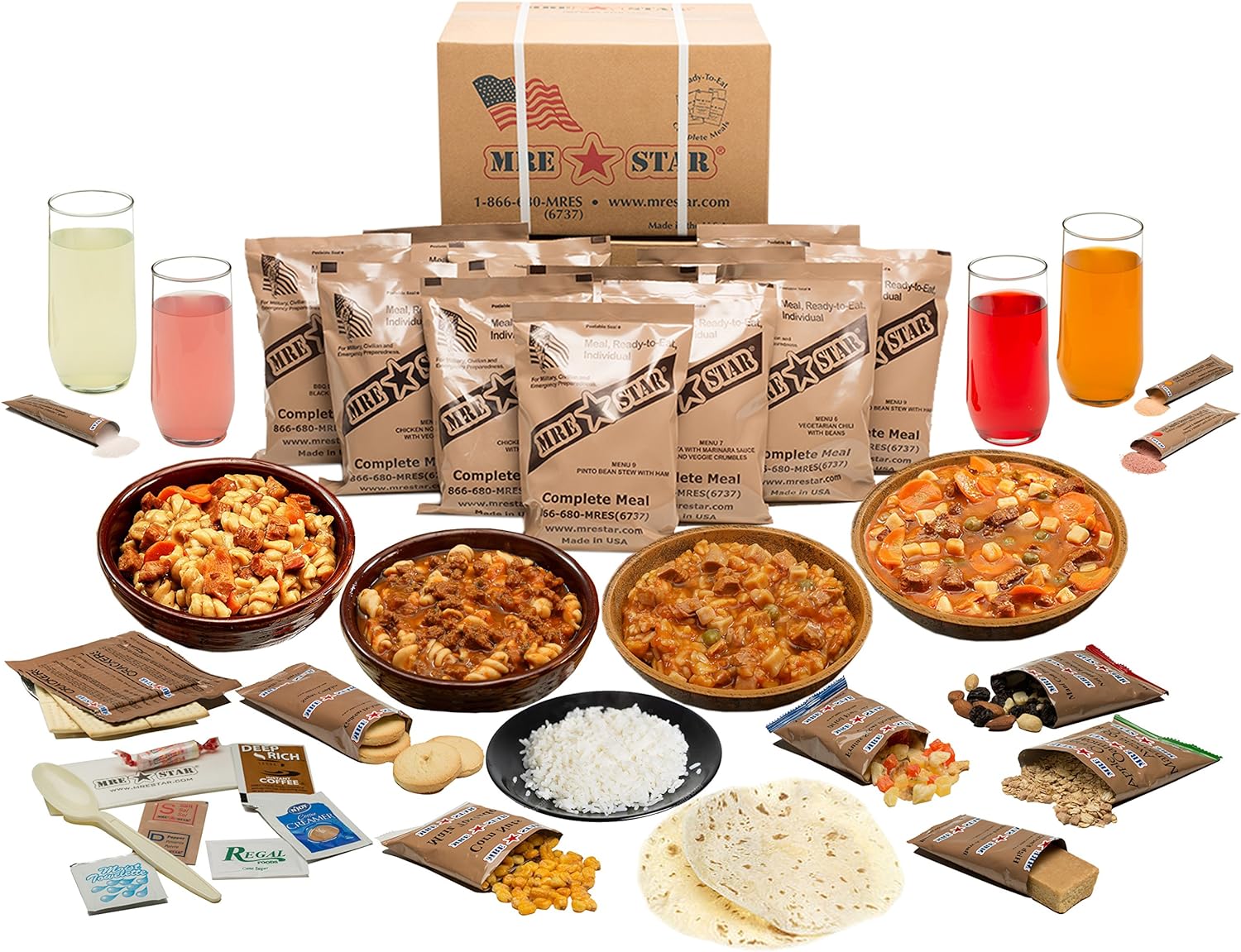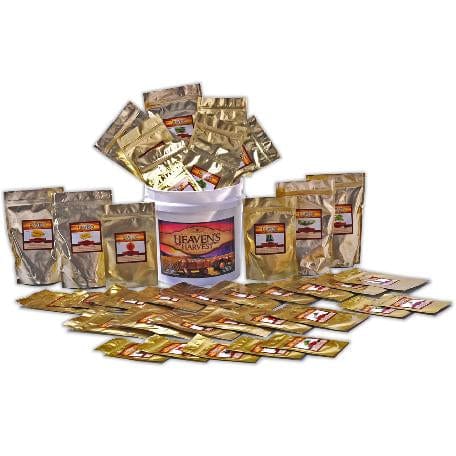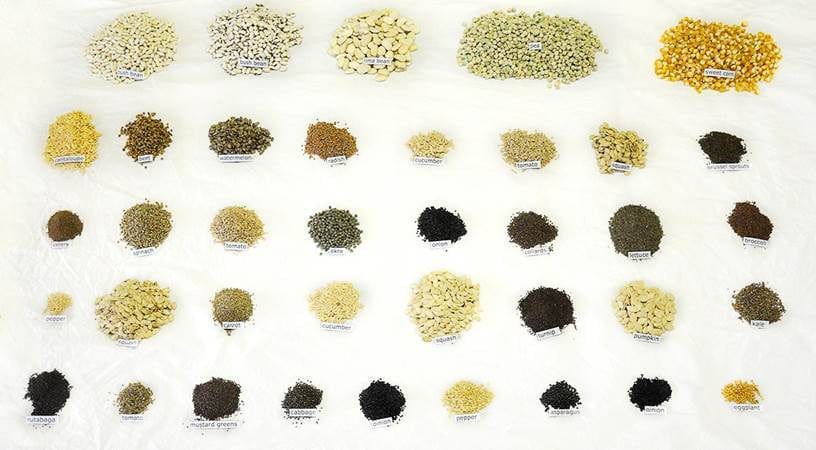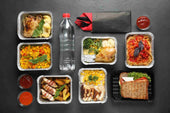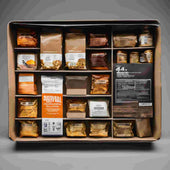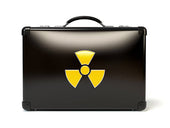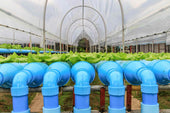Let's Start with the Big Picture

If you've ever walked into the grocery store and felt your stomach drop because your usual dozen eggs suddenly cost twice as much, that's the kind of thing we're talking about.
This isn't just some headline about inflation or politics. It's when the price of rice, coffee, cooking oil, or bread jumps overnight and hits your wallet hard.
One major reason why? Trade wars. And here is the nutshell version. When nations begin bickering about exports and imports, they tend to bring in tariffs.
That is, more taxes on products that move across borders. When those prices rise for producers, farmers, and haulers, it doesn't remain there.
It rolls down hill and onto us. Something that was once affordable is no longer.
These sudden spikes surprise everyone. They strike quickly. One week you're okay, the next week your food bill is a joke. The fact is, we can't halt inflation or dictate global trade policies.
But we can prepare for the impact. And that's what's important.
What follows is all about making smart, actual moves. You don't have to be wealthy or be off-grid. You just have to be a little more prepared than yesterday. Let's take it step by step.
What's Causing All This?
Let's cut through the politicking. A trade war isn't just politicos talking. It's when one nation places taxes, or tariffs, on goods coming in from another nation.
And then they respond with retaliatory tariffs. The tit-for-tat goes on for months or even years. Behind all those closed doors, what happens catches up with us at the grocery store where we purchase our groceries.
When that type of war erupts, it affects producers, farmers, and all others who deliver food from the soil to your plate.
Consider the trade war between the United States and China.
That single action drove up soybean, pork, seafood, and other prices. Why? China reduced American purchases, which reduced farmers' choices and costs, which were passed along to you and me.
Food prices
Once prices rise on one ingredient, it does not stop there. It spreads. The price of animal feed climbs, and suddenly, poultry, beef, and dairy products cost more too.
That affects the full chain. Grocery stores raise prices. Restaurants do the same. People start cutting back on better meals because they are too expensive.
This is how price volatility occurs. One season, everything is fine, and the next, you are paying twice as much for milk or simple bakery items.
Some products that remained affordable for decades have suddenly become luxuries.
Most consumers do not even realize this until the bill comes down harder than it normally does.
Beyond Food
It isn't only food that is more expensive.
Transport, packaging, fuel, and food storage and movement-related services also increase. Interest rates ride along behind inflation, so the price of doing business increases.
That impacts agriculture, farm production, store operations, and even the restaurants we enjoy dining at. The money that once stretched so far no longer pays for the same slice.
This sort of system pressure is difficult to measure in real time, but we feel it. Every shopping trip, every dining-out meal, every family dinner is more expensive.
So, why do you care?
The second half of each year appears to bring a new challenge. The food chain is volatile due to supply disruptions, crop blight, or migration that influences labor.
If you want to prepare for inflation and food price increases, you need to understand how international trade influences your local supermarket.
Awareness is the beginning. Understanding what drives the increase in expenses allows you to make wiser choices with your resources.
Concentrate on what you can manage and what you consume.
How do you budget? Where do you source? How much stock do you have? When you get ahead of the shifts, you are not merely responding.
You are safeguarding your home. And that is what preparation truly is.
Why Food Prices Go Up So Fast

Production Costs
Let's keep it simple. Inflation occurs when it costs more to produce, transport, and sell a product. For food, the price increase comes quickly.
It seems at times that one month you can buy everything on your grocery list, and the next month you are returning items to the shelf.
There are many reasons for this, but one of the greatest is production cost.
When fuel, fertilizer, and packaging prices increase, farms and food manufacturers must pay more money to break even on the food system.
That translates into more money at each stage of the process.
Fuel and Freight
Fuel impacts everything from the tractors that farmers use to the trucks that transport your produce to the supermarket.
Fertilizer prices are a major concern for farming, particularly when global supply chains are interrupted.
And packaging, including plastic, cardboard, and shipping material, has become more costly in recent years.
That means even staple products such as milk, sugar, snacks, and bakery goods can cost more than anticipated.
Ripple Effect
The ripple effect ripples from the farm to the store to your kitchen. Grocery stores increase prices, restaurants raise their meal charges, and consumers like us pay more for the same amount of food we have been purchasing for many years.
Food Categories
Some foods are more susceptible than others. Poultry and seafood, for instance, rely on feed and refrigeration. When energy and grain prices increase, these commodities feel the brunt directly.
Other foods, such as imported produce and drinks, are influenced by trade tensions, transportation disruptions, and disease outbreaks in exporting nations.
And in the latter half of the year, seasonal changes in demand and harvest patterns introduce further price uncertainty.
For this reason, you should remain vigilant. If you are interested in learning how to prepare against inflation and food price surges, observe the sectors that fluctuate the most quickly.
Snacks, dairy products, fresh fruits and vegetables, and packaged foods are among the first to increase when inflation is activated. It is not about living in dread of such changes but about knowing about them.
If you understand what drives the prices of food, you will be better able to manage your budget, save correctly, and stabilize your family dining during volatile times.
What You Can Do Right Now

Budget Check
Take a look at where your money is going. Monitor what you spend on food each week. Not to freak yourself out, but to know the truth. You can't fix what you don't measure.
Most people are amazed when they see how much goes towards snacks, quick runs to the store, or dining out at restaurants.
Creating a bit of wiggle room in your food budget provides room to breathe. It comes in handy when food costs rise unexpectedly.
It is not about reducing everything. It is simply about paying attention and adapting where it matters. That is how you plan for inflation and food price surges without going crazy.
Buy Better
There is a wide distinction between buying in bulk and panic buying. Don't let price volatility drive you into hoarding. Plan long-term. Purchase the foods your household already consumes.
Select shelf-life items such as rice, pasta, canned seafood, beans, powdered milk, and sauces. Ensure they can last and fit into your regular meals.
Keep extra amounts of what you already consume. Then, if prices go up next week, you are covered.
Check unit prices, compare information from various stores, and have a list of your regular bargains.
Some things, such as sugar, oil, and bakery goods, can be stored for months and will pay for themselves in the long run.
Pantry Skills
A fully stocked pantry is your protection against inflation and unexpected store shortages. You don't need a bunker, only some clever shelves.
Cycle what you stock so nothing spoils. Organize foods by category—grains, proteins, sauces, and snacks—so you can see what you have.
Maintain your attention on flexibility. Canned tomatoes, beans, broth, frozen vegetables, and flour can be stretched into dozens of meals. Add in a few comfort foods as well.
A bit of chocolate or a preferred drink helps make the situation less stressful when things get tight.
Grow a Bit
Even a single pot of herbs on a sunny windowsill is a victory. You don't have to have a whole farm to shave some dollars off increasing costs.
Lettuce, green onions, and spinach develop quickly in tight spaces. Tomatoes and peppers thrive in buckets.
Herbs such as basil, parsley, and rosemary can reduce your market store spending, particularly during the latter six months of the year when fresh produce normally surges.
Growing food keeps you linked to the food system. It develops skills and resilience. After a while, even a modest home operation can augment your meals in significant ways.
Make It Stretch
Begin meal planning around what you already have. This will cut costs and waste. Create new meals out of leftovers. If you make a large quantity of rice and beans, use them to make burritos, soups, or veggie bowls throughout the week.
Check your fridge first. Half the battle is being aware of what must be consumed before it expires. Learn how to repurpose small quantities. Soup bones, vegetable scraps, stale bread—these are still assets.
Cook Smart
Low-budget meals don't have to be dull. Eggs, oats, frozen vegetables, and legumes are inexpensive and keep you full. Experiment with stir-fries, stews, or meals in one pot.
Plenty of other kinds of recipes make it simple to feed your family well on a shoestring budget.
Take what you learn and teach it to somebody else. Share the knowledge. The more informed and ready people are, the better our communities will be.
When inflation strikes again, as it certainly will, you won't be merely responding. You will be leading. That is the power of preparation. That is how we stand in line.
Community Effort
Co-ops & Local Resources
During difficult times, we do not have to struggle alone. Acting together is one of the best defenses against increasing food costs.
A good example is food cooperatives, or co-ops.
They are businesses owned by members and run by the community. This allows people to pool resources and purchase food in bulk, reducing costs for all involved.
Whether it's co-op membership or pooling buying power, co-ops can deliver fresh, locally grown produce without the middleman's markups that grocery stores tack on.
Buy from local producers whenever you can. Farmers' markets or buying directly from farmers mean less money is spent on middlemen and more on the growers themselves. Buying local keeps more money within the community and decreases the impact on the environment in terms of long-distance shipping.
Neighborhood Food Sharing
Another possibility is initiating or joining local food-sharing initiatives.
This could be a community garden where individuals plant and harvest food together or a food bank-like system in which excess food is exchanged.
The concept is straightforward: share the resources, be it land, equipment, or food, to give everyone in the community greater access to nutritious meals.
If your neighborhood doesn't currently have one, consider creating a food-sharing network.
It might be as straightforward as a neighborhood-based Facebook group where folks swap what they've produced or pantry staples beyond their needs.
You might partner with schools, churches, or community centers and set up a periodic food swap event. Little actions like these can make a huge difference, particularly when prices are volatile.
Policy Matters
Although it's crucial to pay attention to what's happening within communities, paying attention to the larger picture is also important in policy. What happens in government buildings impacts food prices, particularly regarding trade agreements and subsidies.
For instance, if the policy of a country regarding importing or exporting changes, it can lead to spikes in particular foods such as seafood or grain. That's why it's important to stay aware of trade choices. If you notice news of changes in tariffs or supply chain, prepare to revise your budget or meal plans.
Food subsidies are also something to watch. These can prevent staples such as milk, bread, and grains from becoming prohibitively expensive. Speaking out for equitable and affordable subsidies can cap prices for all, particularly lower-income households. Keep yourself informed and speak up. The more you know about policy, the more you can prepare.
Community resilience is created through awareness and action. When we work together and fight for the right policies, we can ride out the fluctuations in the cost of food. And when we do so, we're not just making it through—we're thriving as a community.
Thinking Long-Term
Food price spikes are not a one-time phenomenon. Trade wars, weather, and shifting global markets can trigger spikes anew.
The good news is that we can invest in resilience today to be better prepared when the next wave hits. This means thinking beyond today's grocery list and looking at long-term solutions that make us less dependent on volatile food systems.
One action we can take is to promote local food systems. Instead of relying on flimsy international supply chains, we can pledge allegiance to our own local farmers, co-ops, and food networks.
Buying directly from farmers and producers via our local networks is what builds a more resilient food system—and it puts money in your pocket to boot.
Local foods are generally fresher and cheaper than imports if you live in certain areas. Moreover, home gardening in your own way, however limited in amount, reduces your reliance on stores altogether.
If you're inclined to go the whole way, though, spend on small items for food security. Then, start learning about the basics of food preservation, such as canning, drying, or freezing.
This helps freeze prices when something is at a cheap cost, so you have stocks in reserve if prices spike. Seed saving is another method. By saving seeds you've harvested, you give yourself the ability to grow your own vegetables every year, regardless of the condition of the supply line.
Also, think about learning or improving skills like cooking and gardening.
The more you know about cooking from scratch and growing your own food, the less you'll be at the mercy of grocery store prices. These are not just handy skills; they're liberating. You're in control of what you put on the table.
Final Thoughts: Don't Panic, Prepare
Trade wars and inflation are legitimate issues, but we don't have to live in dread of them.
The fact is, they are part of our world, but they don't need to rule our lives.
Small actions today—monitoring your spending, storing up on what you need, supporting local food networks—will save you money and worry down the road.
And it builds your community by gathering people together to access resources and information.
Keep in mind, the secret is to begin where you are. Utilize the food, space, and budget you have now and act.
Begin small, and the rewards in the long run will be worth it. You've got this!

